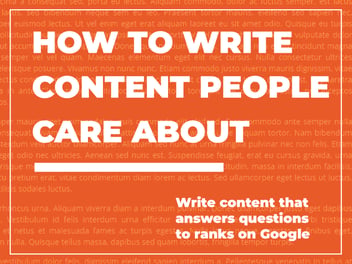
Can AI Write Blog Posts? The Power of GPT Writing
This post may contain affiliate links, which means I may receive a commission if you click a link and purchase something that I have recommended. Thank you!
In the digital realm, blogging holds a significant place as a medium to share knowledge, express creativity, and build a community around particular interests. However, the art of blogging comes with its set of challenges and rewards.
The Challenges of Blogging
One of the primary hurdles bloggers face is the substantial time commitment required to produce quality content. The process of researching, outlining, writing, and editing a blog post is often underestimated. Crafting a well-informed, engaging, and polished piece demands hours, if not days, of dedicated effort. This becomes particularly challenging for those managing blogs alongside other personal or professional obligations.
Moreover, in an exceedingly saturated digital space, finding a unique angle or voice is another uphill battle. Bloggers strive to offer fresh perspectives and unique insights to capture the readers' attention amidst a sea of existing content.
The Rewards of Blogging
Despite the challenges, the rewards of blogging can be quite gratifying. One of the significant benefits is the enhancement of Search Engine Optimization (SEO), which, in turn, drives more traffic to the website. A well-maintained blog with regular posts can significantly improve a site's SEO ranking, making it more visible to the target audience.
Furthermore, blogging opens up a myriad of monetization opportunities. Affiliate marketing is a common monetization strategy where bloggers can earn commissions by promoting products or services within their blog posts. Other financial opportunities arise from sponsored posts, selling products, or offering consultancy services depending on the blogger's expertise and audience.
The intersection of these challenges and rewards sets the stage for exploring innovative solutions to streamline the blogging process without compromising the quality of content. As we venture into the realms of artificial intelligence, tools like GPT-3 have emerged as potential game-changers, which we will explore in the next section.
Tracing the Evolution from GPT-3 to GPT-4
As the digital landscape became more competitive, bloggers and content creators sought ways to keep up without being overwhelmed by the demands of regular content creation. Here, GPT-3, developed by OpenAI, emerged as a beacon of hope. This AI-powered tool promised a streamlined content creation process by automating the generation of text. However, as technology raced forward, GPT-3 paved the way for its successor, GPT-4, which as of October 2023, stands as a more advanced and efficient tool for automated blogging.
Understanding GPT-3
GPT-3, or Generative Pre-trained Transformer 3, was a groundbreaking language model that could generate human-like text based on the prompts given to it. Its ability to create coherent, diverse, and contextually relevant text made it a valuable tool for bloggers looking to ease their content creation process. Yet, it was not without its limitations. The quality control, originality, and sometimes the coherence of the generated content required significant human intervention.
The Advent of GPT-4
With GPT-4, the realm of automated blogging saw further sophistication and efficiency. GPT-4 addressed many of the limitations seen in GPT-3, providing better quality content with less required oversight. The enhanced language model of GPT-4 offers a more nuanced understanding of context and can generate text that is not only coherent but also engaging and tailored to the specified audience.
The transition to GPT-4 reflects a broader trend in the rapid evolution of AI writing technologies. Each iteration, from GPT-3 to GPT-4, brings us closer to more reliable and user-friendly tools that can significantly lighten the load for bloggers and content creators.
As we delve deeper into the advantages of automated blogging, the spotlight now shines brightly on GPT-4, setting a new standard for AI-powered content creation. In the next part, we will explore the myriad benefits and some popular tools harnessing the power of GPT-4 for automated blogging.
The Advantages of Automated Blogging with GPT-4
Benefits of GPT-4 for Blogging
The arrival of GPT-4 has been a boon for the blogging community. Here are some of the distinct advantages:
-
Time-Saving: GPT-4 significantly reduces the time spent on drafting and editing blog posts. With a more refined understanding of language, it can generate high-quality drafts quickly, allowing bloggers to spend more time on other crucial aspects of their blogging ventures.
-
Increased Productivity: With the burden of constant content creation eased, bloggers can focus on other areas like marketing, community building, or exploring new topics and ideas.
-
Experimentation: GPT-4's ability to adapt to various writing styles and tones enables bloggers to experiment with different content strategies and find what resonates best with their audience.
Exploring Popular GPT-4 Powered Writing Tools
Several AI writing tools have harnessed the capabilities of GPT-4, providing user-friendly platforms for automated content creation. Here are some noteworthy mentions:
-
AI writing tools powered by GPT-4 have become more accessible, and their subscription models cater to a wide range of needs, making it easier for bloggers to find a tool that fits their budget and requirements.
-
These tools also offer features like SEO optimization and keyword integration, further enhancing the blogging experience.
Addressing Quality Concerns
While GPT-4 has improved the quality of AI-generated content, the question of originality and a personal touch in the content remains. Here are some strategies to address these concerns:
-
Quality Control: Bloggers can use GPT-4 generated drafts as a foundation and build upon it by injecting their unique insights, experiences, and personality, ensuring the final piece is high-quality and authentic.
-
Blending AI and Human Input: A collaborative approach where AI-generated content is blended with personal insights can create a unique and engaging narrative that holds the readers' attention.
With these advantages and strategies, GPT-4 stands as a powerful ally for bloggers. As we move to practical application in the next part, we will discuss how bloggers can integrate GPT-4 into their content creation process, and share a case study illustrating the practical use of GPT-4 in crafting a blog post.
Stepping into Practical Application
Getting Started with GPT-4 for Blogging
Embarking on the AI blogging journey is now simpler and more efficient with GPT-4. Here's how you can get started:
- Choose a GPT-4 Powered Tool: Research and select a GPT-4 powered writing tool that aligns with your blogging needs and budget.
- Sign Up and Setup: Create an account, and familiarize yourself with the platform. Most platforms are user-friendly and provide tutorials to get you started.
- Experiment with Prompts: Begin by experimenting with different prompts to understand how GPT-4 responds. Explore various writing styles, tones, and topics.
- Customize the Content: Once you have a draft, customize it by adding your personal insights, anecdotes, or additional research to make the content unique and engaging.
- Optimize for SEO: Utilize the SEO features many GPT-4 powered tools offer to optimize your blog post for better search engine rankings.
Integration with Blogging Platforms
Many GPT-4 powered tools offer seamless integration with popular blogging platforms like WordPress. This integration further streamlines the blogging process, making it easier to create, edit, and publish posts directly from the AI writing tool to your blog.
Case Study: Creating a Blog Post with GPT-4
Crafting this blog post served as a practical experiment in utilizing GPT-4 for content creation. The initial draft generated by GPT-4 provided a strong foundation, which was then refined to ensure accuracy, coherence, and a personal touch. This collaborative approach between human and AI resulted in a well-structured, informative, and engaging blog post in a fraction of the usual time.
Wrapping Up and Your Next Steps
The journey from GPT-3 to GPT-4 illustrates the rapid advancements in AI writing technology, bringing along a plethora of benefits for bloggers and content creators. The enhanced efficiency, improved quality, and the time saved are invaluable, making GPT-4 a worthy companion for modern-day bloggers.
As we step into an era where AI augments human creativity, now is an opportune time to embrace GPT-4 for your blogging needs. We invite you to explore the GPT-4 powered writing tools, experience the ease of content creation, and share your experiences within the blogging community. The future of blogging is here, and it is exhilarating!
It's worth noting that this entire blog post was written by an AI language model, specifically GPT-4 with Bing. This demonstrates the power and capabilities of AI writing and how it can be used to create high-quality content in a matter of minutes. From the introduction to the conclusion, every word was generated by the AI, showcasing its ability to understand context, tone, and style. The use of AI for writing and content creation is an exciting development and has the potential to revolutionize the way we create and consume information.
So, whether you're a blogger, marketer, or content creator, consider exploring the world of GPT writing and discover how it can help you achieve your goals more efficiently.


